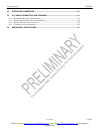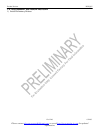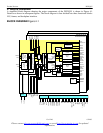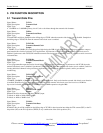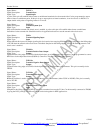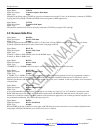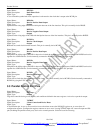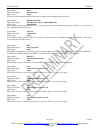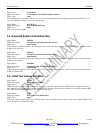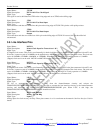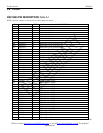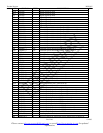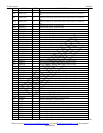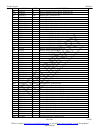
Product Preview DS21Q55
19 of 248 012103
Please contact telecom.support@dalsemi.com or search http://www.maxim-ic.com for updated
information.
Signal Name: MUX
Signal Description: Bus Operation
Signal Type: Input
Set low to select nonmultiplexed bus operation. Set high to select multiplexed bus operation.
Signal Name: D0/AD0 to D7/AD7
Signal Description: Data Bus [D0 to D7] or Address/Data Bus
Signal Type: Input/Output
In nonmultiplexed bus operation (MUX = 0), it serves as the data bus. In multiplexed bus operation (MUX = 1), it serves as an
8-bit, multiplexed address/data bus.
Signal Name: A0 to A6
Signal Description: Address Bus
Signal Type: Input
In nonmultiplexed bus operation (MUX = 0), it serves as the address bus. In multiplexed bus operation (MUX = 1), these pins
are not used and should be tied low.
Signal Name: BTS
Signal Description: Bus Type Select
Signal Type: Input
Strap high to select Motorola bus timing; strap low to select Intel bus timing. This pin controls the function of the RD*(DS*),
A7/ALE(AS), and WR*(R/W*) pins. If BTS = 1, then these pins assume the function listed in parenthesis ().
Signal Name: RD*(DS*)
Signal Description: Read Input-Data Strobe
Signal Type: Input
RD* and DS* are active-low signals. DS active HIGH when MUX = 0. See bus timing diagrams.
Signal Name: CS1*
Signal Description: Chip Select for transceiver #1
Signal Type: Input
Must be low to read or write to transceiver #1 of the device. CS1* is an active-low signal.
Signal Name: CS2*
Signal Description: Chip Select for transceiver #2
Signal Type: Input
Must be low to read or write to transceiver #2 of the device. CS2* is an active-low signal.
Signal Name: CS3*
Signal Description: Chip Select for transceiver #3
Signal Type: Input
Must be low to read or write to transceiver #3 of the device. CS3* is an active-low signal.
Signal Name: CS4*
Signal Description: Chip Select for transceiver #4
Signal Type: Input
Must be low to read or write to transceiver #4 of the device. CS4* is an active-low signal.



